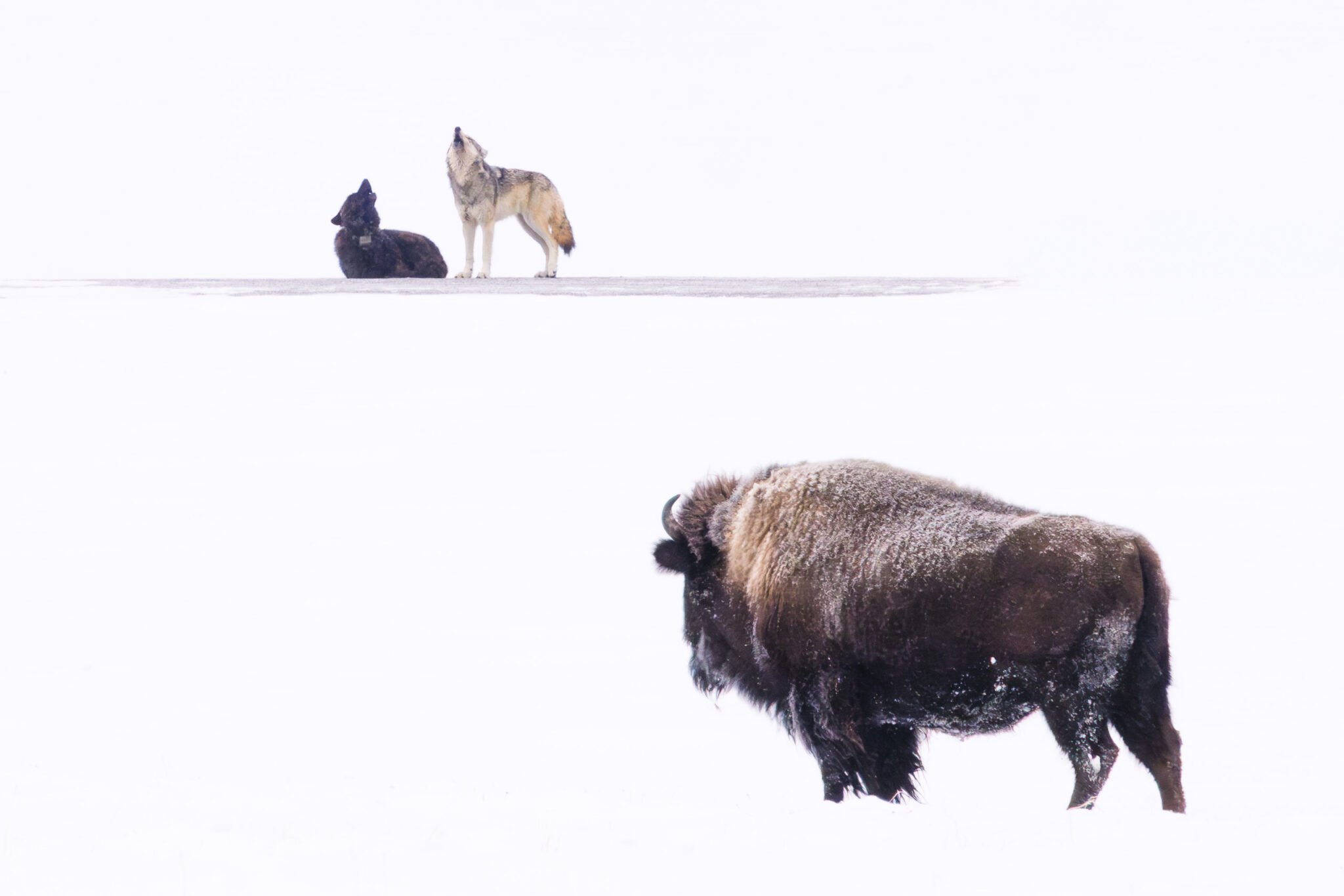The best wildlife location for photographers in the United States
Yellowstone National Park is a paradise for wildlife photographers. Whether it is the winter, spring or autumn, each season offers photographers one of, if not thee best opportunity to photograph some amazing wildlife. Here are the reasons why you might want to consider going to Yellowstone.
Abundant Wildlife: Yellowstone is home to an incredibly diverse range of wildlife, including iconic species such as grizzly bears, wolves, bison, elk, moose, and bighorn sheep. The park's varied ecosystems support a rich array of fauna, providing photographers with ample opportunities to capture stunning images of these animals in their natural habitats.
Natural Landscapes: In addition to its wildlife, Yellowstone boasts breathtaking natural landscapes, including majestic mountains, vast forests, meandering rivers, and picturesque geothermal features such as geysers, hot springs, and mud pots. These varied environments offer photographers a wealth of scenic backdrops for their wildlife shots.
Behavioural Opportunities: Yellowstone's wildlife is known for its relatively undisturbed behaviour, providing photographers with opportunities to observe and capture natural behaviours such as hunting, grazing, mating, and nurturing offspring. The park's protected status and strict regulations help ensure that animals can thrive without undue human interference.
Accessibility: Yellowstone offers excellent accessibility for wildlife photographers, with a well-developed network of roads, trails, and viewing areas throughout the park. This makes it easier for photographers to reach prime locations for observing and photographing wildlife, whether by car, on foot, or via guided tours.
Seasonal Variation: Yellowstone experiences distinct seasonal changes, each offering unique opportunities for wildlife photography. Springtime brings newborn animals and vibrant vegetation, while summer sees the park teeming with life and activity. Fall brings stunning foliage and rutting season for many species, while winter blankets the landscape in snow, creating a magical winter wonderland.
Conservation Success Stories: Yellowstone is renowned for its role in the conservation of several iconic species, including the successful reintroduction of wolves in the 1990s. Capturing images of these species thriving in their natural habitats can serve as a powerful visual testament to the importance of conservation efforts.
Challenges and Rewards: Wildlife photography in Yellowstone presents its own set of challenges, from unpredictable weather and rugged terrain to the need for patience and perseverance in capturing the perfect shot. However, the rewards of capturing stunning images of Yellowstone's wildlife and landscapes are well worth the effort.
Overall, Yellowstone National Park offers wildlife photographers a wealth of opportunities to capture stunning images of iconic species against the backdrop of some of North America's most spectacular natural landscapes.
We offer photographers the opportunity to join us on our photo workshops in Yellowstone. We offer both a winter trip and a spring trip.
Yellowstone Winter Photo Workshop - Winter in Yellowstone National Park provides a once-in-a-lifetime opportunity to photograph wildlife and steaming geothermal features against pristine snow-blanketed landscapes. Temperatures are cold, and access is limited in the winter, keeping crowds small. If you’ve visited Yellowstone in other seasons, winter is unlike any other.
We’ll travel by private snow coach to access the snowbound interior of the park, which is inaccessible to regular vehicles in the winter. Along the way, we’ll seek wildlife encounters and wintry landscapes. We’ll have wildlife drives through hotspots like Hayden Valley, Lamar Valley, and others. See this workshop here
Yellowstone Spring Photo Workshop - Spring in Yellowstone and Grand Teton National Parks is one of our favourite photography seasons. The land is green and lush, waterfalls run strong, and snow caps remain on the mountain ranges. Spring means peak wildlife activity and newborn animals. Grizzly and black bears emerge from hibernation, some with cubs in tow. Bison, elk, pronghorn, mule deer, and moose will all have new calves this season, with the cute and rambunctious bison “red dogs” being a highlight. Also, the crush of summer visitors has yet to arrive this early in the year. See this workshop here



